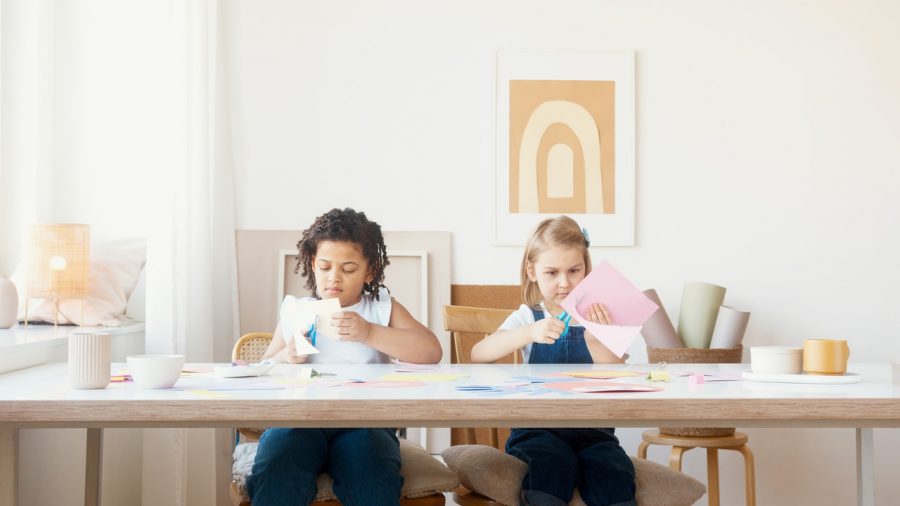Looking for ways to display your children’s artwork with panache and purpose? Here’s how.
Published June 23, 2021
There are endless benefits to children engaging in art — it is truly good for their mind, body, and soul. As parents, we often feel like each drawing, painting and sculpture is a masterpiece worthy of preservation until the end of time, but it doesn’t take long for the mountain of art to get higher and higher (and higher and higher). Here are some fresh tips and fun ways to display your child’s art that doesn’t involve wallpapering your refrigerator.
Matte and frame their masterpieces:
Give your little artist the Van Gogh treatment by getting some of their pieces matted, framed and hung on the wall. Families with multiple pieces to hang can look into creating a gallery wall. Gallery walls can be mix-and-matched with other wall accents such as family photos and hangable home decor. Families opting to highlight only one or two of their children’s artworks can use oversized frames and mattes to make for a more impactful, bold look. Three-dimensional pieces can find a home on shelves and mantels.
Pro tip: No extra wall space? Swap out a few photos in collage frames for your children’s art.
A picture is worth a thousand words – a picture of a picture is worth even more:
Here is a real space-saving idea (and great conversation starter) – create a photo book using images of your child’s art. Online photo retailers like Snapfish and Shutterfly offer great options for hardcover coffee table books using images uploaded from your phone or computer. Simply gather the art you wish to include in your book, find a well-lit clean space to photograph each piece, and upload the images.
Pro-tip: Before photographing the art, be sure to lay a soft towel over any folded or bent pieces and iron them flat. Once you’ve received your photo book, feel free to put the original pieces in a waterproof container tucked away in a closet.
Put the fun in functional art:
Breathe new life into your child’s art by repurposing some of it. You know that large thin butcher paper? My son loves painting on that stuff — like to the point where we are up to our elbows in it. So we’ve started using it as gift wrap. We’ve also laminated drawings to use as placemats. Cardstock art gets sliced and hole-punched with a ribbon and made into bookmarks. At first, I was worried that I was destroying my son’s art, but the truth is we appreciate it even more by being able to utilize his art in our home.
Pro tip: Did you know that a little modge podge and varnish, you can turn your child’s art into custom wallpaper for wooden furniture? Make one-of-a-kind pieces that are both functional and full of life.
Rotate seasonal art:
Many of the art pieces my son has made have to do with seasonal themes like holidays and weather. Treat these works like other seasonal decor and rotate them every few months. From cut paper snowflakes in January to bright yellow clay sculptures in July and dreidel-inspired spin art in December, we never have a shortage of options.
Pro tip: Invest in dollar store frames and spray paint them a neutral color for a cohesive (and inexpensive) look.
Maybe they weren’t done yet:
Since my son and I both enjoy making art, we try to be as environmentally conscious as possible. One thing we’ve done when we want to make new art, is pull out old art and add to it. We always keep a bin of previously made art that still has a lot of space to fill, or create mixed-media art by painting on top of old crayon drawings or practicing our scissor cutting using marker illustrations.
Pro tip: There are lots of ways to be greener with art. Some easy ways include ditching new paint brushes and adding old toothbrushes (you can even cut the bristles in different shapes), adding a little water to glue to make it last longer and purchasing larger containers of paint and refilling old bottles as needed.















